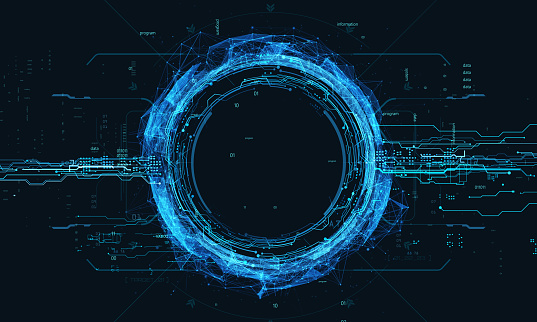Computing power is the ability of a computer or computing system to perform complex calculations, process large amounts of data, and perform tasks that require high processing power. With the advancements in technology, computing power has increased exponentially, enabling us to solve complex problems, run advanced applications, and process large volumes of data in real-time.
In this article, we will explore the concept of computing power, its importance, and the different factors that contribute to its growth. We will also look at the latest trends in computing power, the future of computing, and how it will impact various industries.
What is Computing Power?
Computing power refers to the ability of a computer or computing system to perform calculations and process data quickly and efficiently. It is measured in terms of the number of operations per second that a computer can perform. The higher the computing power, the faster a computer can perform tasks and process data.
Computing power is a crucial factor in the performance of computers and computing systems. It determines how quickly tasks can be completed and how much data can be processed. A computer or computing system with high computing power can handle more complex tasks, run advanced applications, and process large volumes of data in real-time.
Factors that contribute to Computing Power
There are several factors that contribute to the growth of computing power. These include:
Moore's Law: Moore's Law states that the number of transistors on a microchip doubles every 18-24 months, which leads to a doubling of computing power. This law has held true for over 50 years, and it has been a driving force behind the growth of computing power.
Advancements in hardware: The development of new hardware, such as faster processors, larger memory, and more efficient cooling systems, has contributed to the growth of computing power. These advancements have allowed computers to perform more operations per second and process more data.
Advances in software: The development of more efficient software, such as optimized algorithms and programming languages, has also contributed to the growth of computing power. Software can take advantage of hardware improvements to optimize performance and speed up calculations.
Cloud Computing: Cloud computing has enabled organizations to access computing power on-demand, without the need for expensive hardware and infrastructure. Cloud providers offer scalable and flexible computing resources, allowing organizations to scale up or down as needed.
Latest Trends in Computing Power
Artificial Intelligence: The growth of artificial intelligence (AI) has been a significant driver of computing power. AI requires massive amounts of computing power to train deep learning models and process large datasets.
Quantum Computing: Quantum computing is a new computing paradigm that uses quantum bits (qubits) instead of traditional bits. Quantum computers can perform certain calculations exponentially faster than traditional computers, and they have the potential to revolutionize industries such as finance, logistics, and cryptography.
Edge Computing: Edge computing is a decentralized computing infrastructure that brings computing resources closer to the data source, reducing latency and improving performance. Edge computing is becoming increasingly important for applications that require real-time processing, such as autonomous vehicles and industrial automation.
The Future of Computing Power
The future of computing power looks bright, with new technologies and advancements on the horizon. Here are some of the developments we can expect to see in the coming years:
Quantum Computing: Quantum computing is still in its infancy, but it has the potential to revolutionize computing as we know it. Researchers are working to develop new algorithms and programming languages that can take advantage of quantum computing's unique properties.
Neuromorphic Computing: Neuromorphic computing is a new computing paradigm that mimics the structure and function of the human brain. It has the potential to enable computers to perform complex tasks such as image and speech recognition more efficiently.
Optoelectronics: Optoelectronics is a technology that uses light to transmit and process data. It has the potential to significantly increase the speed and efficiency of computing systems. Researchers are exploring the use of optoelectronics in high-performance computing systems and data centers.
Neuromorphic Computing: Neuromorphic computing is a new computing paradigm that mimics the structure and function of the human brain. It has the potential to enable computers to perform complex tasks such as image and speech recognition more efficiently. Neuromorphic computing systems are being developed by companies such as Intel and IBM.
Advanced Materials: Researchers are exploring the use of new materials, such as graphene and carbon nanotubes, in computing systems. These materials have unique properties that could significantly increase computing power and energy efficiency.
Distributed Computing: Distributed computing is a technology that enables multiple computers to work together to solve a single problem. It has the potential to significantly increase computing power and enable new applications, such as decentralized finance and autonomous vehicles.
Impact on Various Industries
The growth of computing power has had a significant impact on various industries, enabling new applications and driving innovation. Here are some examples:
Healthcare: The healthcare industry has been transformed by computing power, enabling new treatments and improving patient outcomes. High-performance computing systems are used to analyze medical images and genomics data, while AI is being used to develop personalized treatments.
Finance: The finance industry has also been transformed by computing power, enabling new applications such as high-frequency trading and risk management. Large volumes of financial data can be processed in real-time, enabling traders to make informed decisions and manage risk more effectively.
Manufacturing: The manufacturing industry has been transformed by computing power, enabling new applications such as digital twins and predictive maintenance. Data from sensors and other sources can be processed in real-time, enabling manufacturers to optimize production and reduce downtime.
Transportation: The transportation industry is also being transformed by computing power, enabling new applications such as autonomous vehicles and intelligent traffic management systems. High-performance computing systems are used to process large volumes of data in real-time, enabling vehicles to make informed decisions and avoid accidents.
Conclusion
Computing power has been a driving force behind technological innovation, enabling new applications and transforming various industries. With the continued advancements in hardware, software, and new computing paradigms such as quantum computing and neuromorphic computing, we can expect to see even more significant advancements in the coming years.
As computing power continues to grow, it will enable us to solve more complex problems, process larger amounts of data in real-time, and develop new applications that we never thought possible. The future of computing power is exciting, and we can expect it to have a significant impact on our lives and the world around us.




0 Comments